یک دسته از شاهکارهای باستانی به جا مونده از اقوام کهن، تقویمهای باستانی هستند که نشونهی رشد بالای علوم در بین اقوام گذشته هستند. با وجود چنین مدارک مستدلی سخته برای من پذیرش این که چه طور غربی ها در کتب تاریخی شون بشر کهن رو بدوی خطاب می کنن. در حالی که گاهی این چنین بازمانده هایی به صراحت روشن می کنه بشر کهن خیلی بیشتر از تصویر مخدوشیه که غرب ازش ساخته. به زعم من تصویر مخدوش غرب از جهان کهن برای اثبات دروغ هاییه که از تاریخ به خورد ملت دادن. وگرنه بشر از آغاز هبوطش بر زمین موحد و متمدن و دانش مند و صاحب توانایی بوده ....
راستی با محاسبات و تخیل هایی از روی یکی از همین تقویم های قدیمی گفتند امسال یعنی 2012 میلادی پایان جهانه ها!

Egyptian & Mayan-Aztec Calendars: Incredibly Sophisticated Earliest Works of Art
We are continuing our historical art overview (see for example, our "Mysterious Non-Egyptian Pyramids"), this time going all the way back to the beginning of the recorded history. Around 5,000 BC first calendars made their appearance, and set the standard by which we measure our months and days today.
Regardless of what you think about Mayan Calendar concerning 2012, you have to admit their representation of time flow was simply stunning:


(images via 1, 2)
This is the Aztec Calendar, on display at the Museo Nacional de Antropologia in Mexico City, Mexico: it's a huge basaltic monolith (it weighs 25 tons), Aztec called it Cuauhxicalli Eagle Bowl, but it is universally known as the Aztec Calendar or Sun Stone.
"The Mayans see time like a river. The Mayans also see changes in time as differences of tones, frequencies or even octaves, not just a hard measurement of something that never changes."
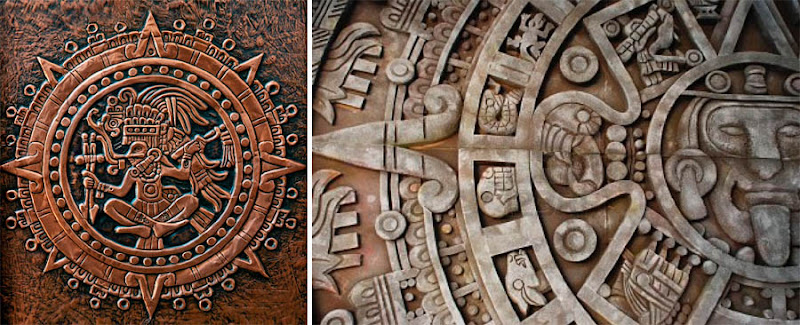
(images credit: Coppersmith Victor Bono, Olga Utlyakova)
Time Out of Time
One of our readers writes "I have a little replica, it's fantastic. Every year has a "no time" period - days "outside the calendar", to freely celebrate life." Well, actually, there are in total five "Nameless Days" (more info) at the end of every Mayan solar year - so called Wayeb'"Time Out of Time", a period for transition and preparation for the next year. Beside the obvious "free time" aspect, these days were considered sacred and quite mysterious "Days of Awe":
"During Wayeb, portals between the mortal realm and the Underworld dissolved. No boundaries prevented the ill-intending deities from causing disasters." For those interested, in 2012 the Wayeb period falls on March 28 - April 1 (source).
Ancient Egyptian Astronomical Calendar: Into the Wide Blue Yonder
The calendar system itself is one of the oldest, dated around 5,000 BC. This is also a truly spectacular presentation, full of pictoglyphs on paper made from the papyrus plant: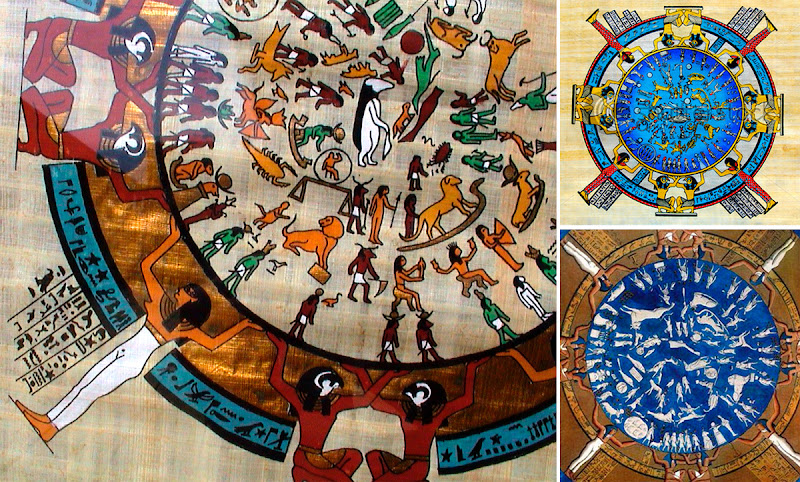
(images via)
In case you're wondering what all these pictoglyphs mean, you can actually visit your local used bookstore and pick up a book "How to Read Egyptian Hieroglyphs".
Here is a bigger version, where you can really appreciate the complexity of artwork (this is a modern reproduction, which can be acquired on the streets of Cairo):
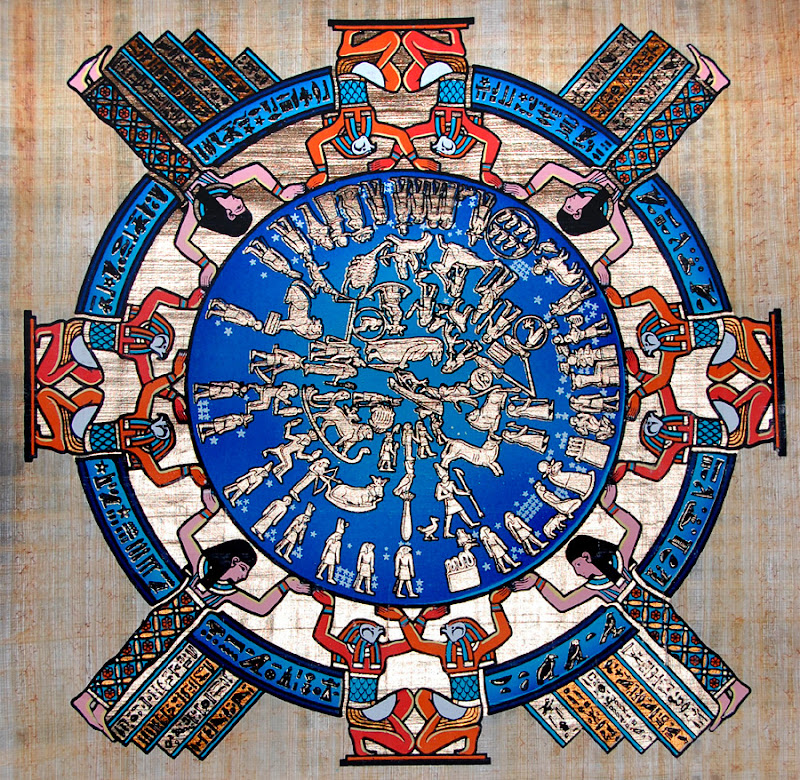
(image via)
"It is known as the Dendera Zodiac and is a bas-relief from the ceiling of the portico of the chapel dedicated to Osiris in the Hathor temple at Dendera. The map of the stars on a plane projection, showing the 12 constellations of the zodiacal band forming 36 decans of ten days each, and the planets. These decans are groups of first-magnitude stars. These were used in the ancient Egyptian calendar, which was based on lunar cycles of around 30 days and on the heliacal rising of the star Sothis (Sirius)." - source.
The zodiacal "star chart" part was actually painted on the ceiling of Hathor temple in southern Egypt - and currently can be seen at Brooklyn Museum:

(image credit: Branko)
More conventional version of this calendar can be seen at Captain Crash DeviantArt portfolio.
Ancient Russian (Slavic-Aryan) calendars:
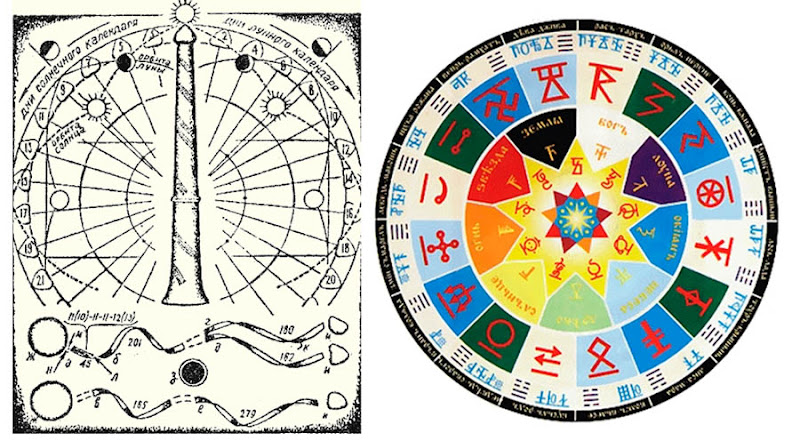
(images via)
The Canterbury Astrolabe Quadrant: a medieval astrolabe made in England around 1383 AD - more info:
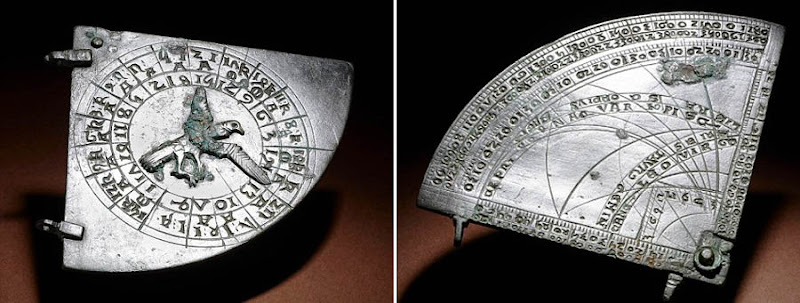
(images credit: PA, via)
Ancient Indian (Aztec) Calendar - The original Codex Borbonicus c. 1507, before the Spanish Conquest of Mexico, 1518-1521 - more info:

(image credit: Collection of the Bibliotheque de l'Assemblee Nationale, Paris via)
Ancient Egyptian art has almost mesmerizing quality:
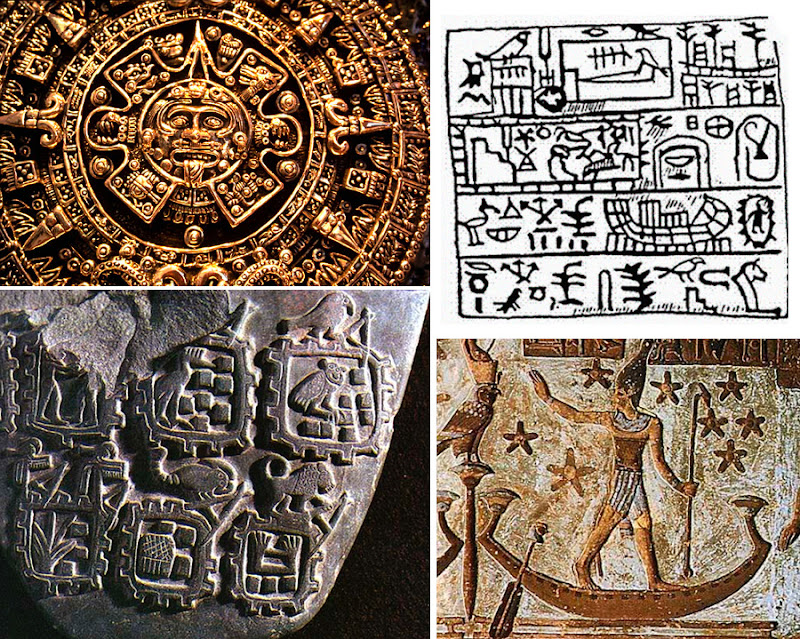
(top left: The Sun Stone fragment; right: Egyptian First Dynasty tablet; bottom right: Navigation by Sirius)
As you can see, the complexity and sophistication of this ancient atwork is simply astonishing. It is nowhere close, however, to what Mother Nature can create at the "spur of the moment" on any surface, like this ice crystals pattern on the parked car's roof:

(image via)





















